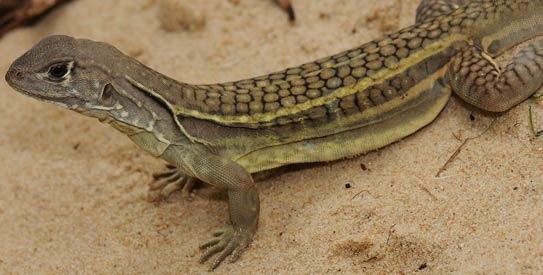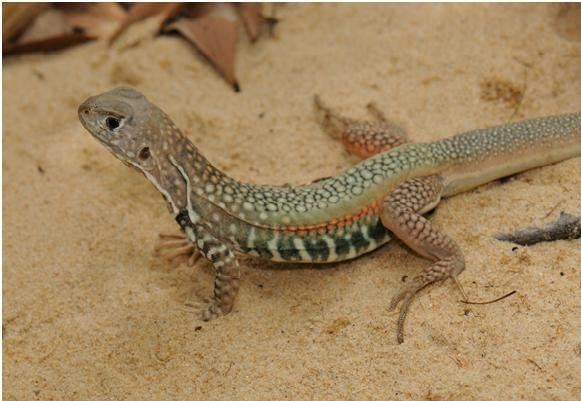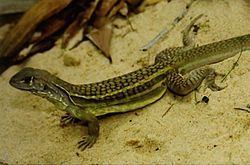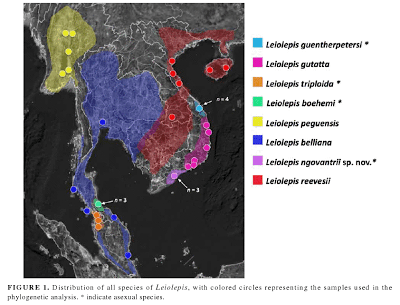Class Reptilia Family Agamidae Rank Species | Subphylum Vertebrata Suborder Iguania Subfamily Leiolepidinae Phylum Chordata Order Scaled reptiles | |
 | ||
Similar Butterfly lizards, Cnemaspis psychedelica, Tyrannobdella, Common butterfly lizard, Myanmar snub‑nosed monkey | ||
Leiolepis ngovantrii
Leiolepis ngovantrii (Vietnamese: Nhông cát trinh sản, meaning "parthenogenic sand iguana") is a species of lizard that is all female, reproducing clonally. The species is named after Vietnamese herpetologist Ngo Van Tri (born 1969) of the Vietnam Academy of Science and Technology, and is believed to be related to two other Vietnamese lizard species, Leiolepis guttata and Leiolepis guentherpetersi.
Contents

Description

L. ngovantrii is known to grow to a length of about 12 centimetres (approx. 5 inches). The lizard's back is covered with brown spots with pairs of yellow stripes running along her sides. Her coloring provides adequate camouflage in coastal sandy soil, as well as the mangrove forests during the dry season when grasses and leaves turn pale yellow.
Scientific discovery

Though the lizard has been long known to and enjoyed by locals in Vietnam's Mekong River Delta, scientists first discovered the species in 2010 after seeing them sold and eaten in many remote Vietnamese village restaurants in Bà Rịa–Vũng Tàu Province, South Vietnam.


